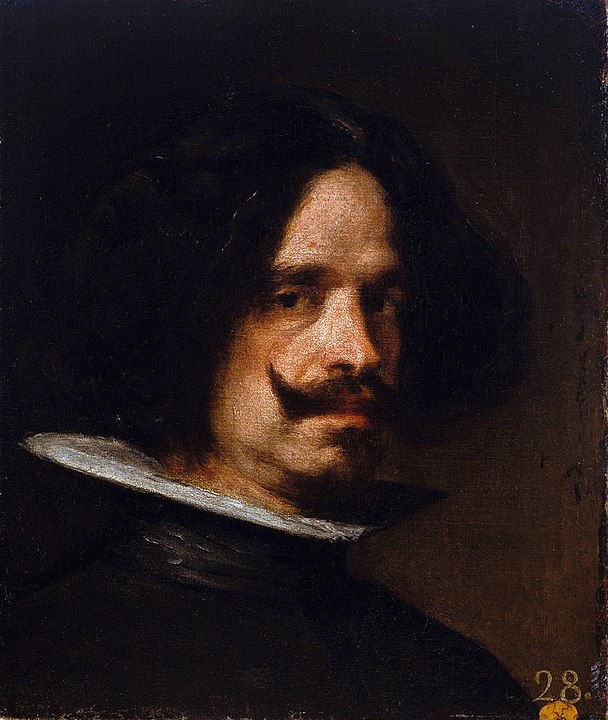Velasquez was born in Seville, Andalusia (Spain), the first child of Joao Rodriguez da Silva and Geronima Velasquez in 1599. His baptism took place a few days after his birth. His paternal grandparents were businessmen who had moved to Seville decades before Portugal and were probably Jewish. Velasquez was well-educated in language and philosophy by his parents. However, he showed an early interest in art and thus began studying under Francisco de Herrera, who ignored the Italian influence of the Seville school. Velasquez stayed with him for a year and learned from Herrera how to use a long-haired brush.
After leaving Herrera Studios at the age of twelve, Velasquez began working as an apprentice to Francisco Pacheco, an artist and teacher in Seville. Although Pachko was generally considered a dull and distinctive painter, he expressed a simple and direct realism in contrast to the style of Raphael he had taught him. Velasquez stayed at Pacheco’s school for five years, studying proportion and perspective while observing the literary and artistic tendencies of Seville circles.
In the early 1620s, Velasquez’s fame increased in Seville. On April 23, 1618, he married Joanna Pacheco (1602-1660), the daughter of his teacher, to whom he bore two daughters. During this time, Velasquez produced significant works and established himself with scenes from the native genre, known as the Bodegónes (inanimate objects).
Bodegónes
Three musicians
THE THREE MUSICIANS
The painting of the three musicians was completed in 1618 and shows three young people gathered around a dinner table and playing music. The painting style is baroque, which is dramatically placed next to light and dark shadows to achieve a sense of volume, this canvas is one of the oldest works of Velasquez.
Inanimate objects are seen on the table in exemplary detail: a loaf of bread on a napkin, a glass of wine and a slice of cheese with a knife in it allow Velasquez to examine various textures. The light shines from the left, creating sharp shadows and intense bumps. Two men are singing with stringed instruments, while the third player, who is clearly the smallest, holds his instrument under his arm and holds a glass of wine. He shows the glass with a mischievous smile and thinks that wine is like a goddess and inspires musicians. In the background is a monkey with a pear in his hand, emphasizing the grotesque nature of the scene, perhaps emphasizing how musicians make fun of real music.
An interesting feature of this canvas is its ambiguous nature: on the one hand, it presents us with a simple genre, while on the other hand, we wonder if behind the seemingly everyday background, hidden semantic layers, such as an irony to decipher. There is?
Egg-boiled old woman
OLD WOMAN COOKING EGGS
It is thought to be the most famous Velasquez work of the Seville period, estimated to date to around 1618, and is now housed in the National Gallery of Scotland in Edinburgh. One of the hallmarks of Velasquez’s work was the inclusion of working-class characters in his work, often using his family as a model. The old woman also appears in Christ in the house of Martha and Mary (1618). This work once again shows the artist’s interest in light shadows, as a strong light source enters from the left, illuminating the woman, the dishes and the poaching eggs, while the background and the boy on the right. He puts it in a deep shadow. The light shadow is so intense that it is impossible to see the bottom wall of the painting other than the basket from which it hangs.
This painting, due to its realism and the quality of its photographic display, with details of everyday plates, cutlery, pans, vases, jars and jars, shine on the glass surface and light play in the melon carried by the boy. Be praised. Boiling frying pan, with oil and egg whites, is shown in great detail. Velasquez has also worked specifically on the details of two faces – one of the most challenging forms of most artists.
Praise Maggie (Three Kings)
ADORATION OF MAGI
Completed in 1619 and housed in the Museum of Del Prado in Madrid, the painting is a biblical scene in which three kings present Christ to a child. In the picture, Melchizedek kneels in the foreground, with Balthazar behind him in a red cape and lace collar, while Caspar stands between the other two. An unidentified young man stands behind Balthazar and looks forward eagerly. Kneeling next to Maryam’s left shoulder, Joseph looks down meditating. This scene is depicted only in the moonlight in the dark at the top of the canvas, while Velasquez once again applies his experimental skills to inanimate objects, showing plants in great detail in the foreground below. The size and format of the painting indicate that the painting was made for an altar, although in a period of history, it was cut on both sides.
It is said that the painting was originally commissioned for Jesuit Christians in St. Louis, Seville, where it remained until 1764. When the Jesuits were expelled from the city in 1767, much of their property was sold to private individuals, including this painting.
Seville water sales
THE WATERSELLER OF SEVILLE
This naturalistic masterpiece of approx

